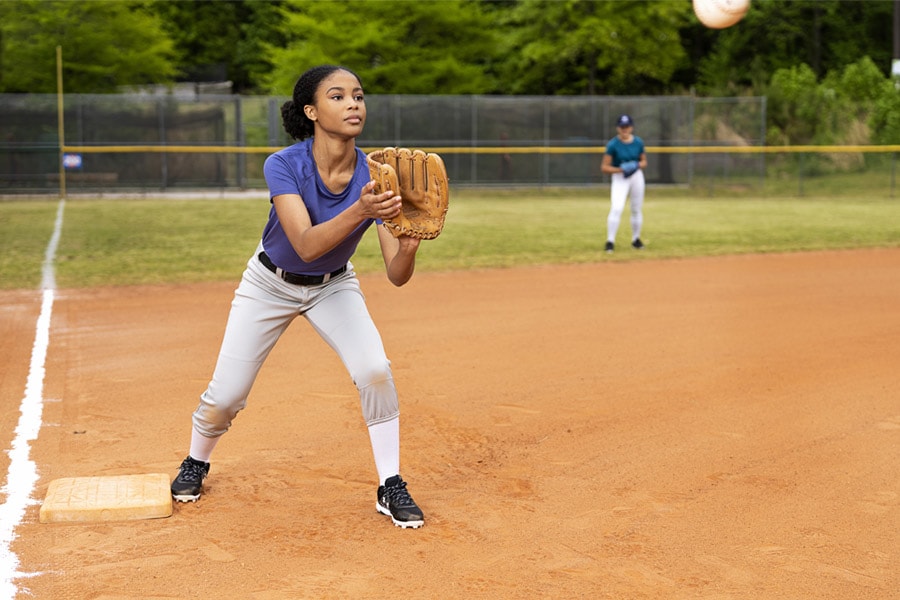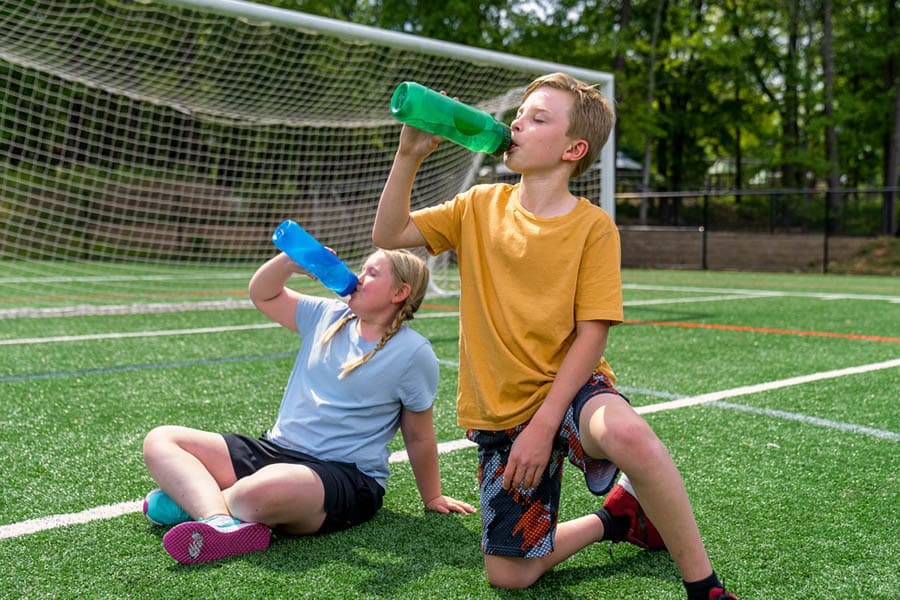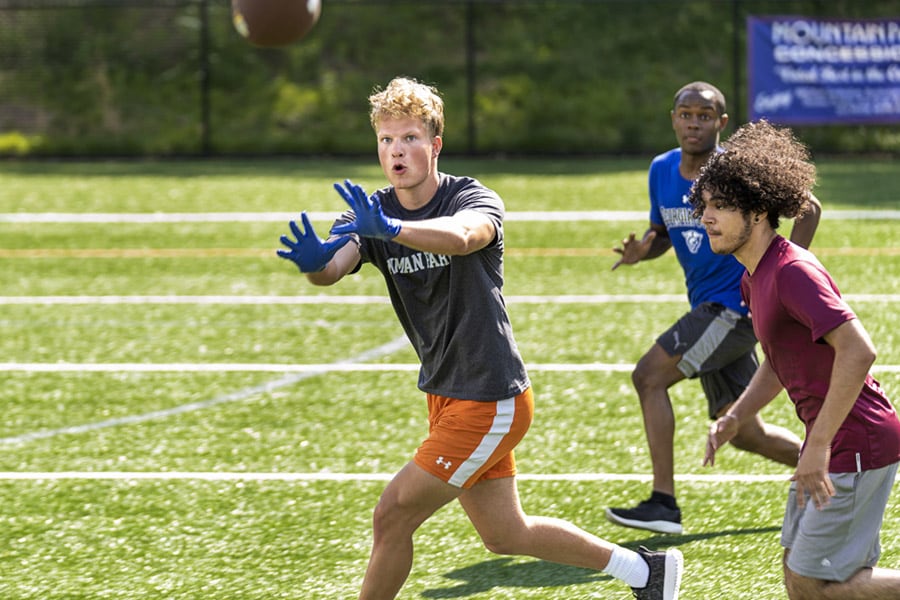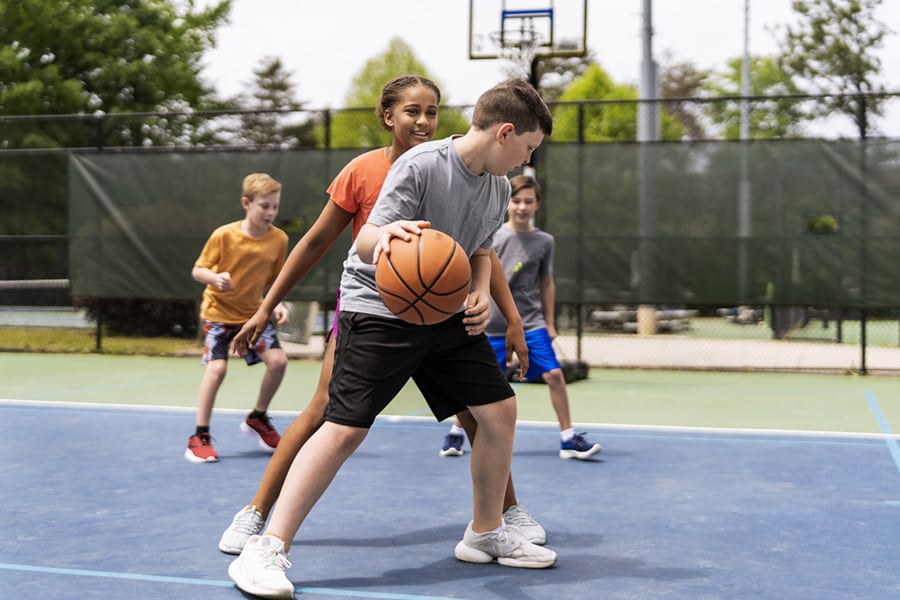Sports Safety Tips to Help Keep Kids in the Game
According to the Centers for Disease Control and Prevention, emergency departments in the U.S. treat nearly 3 million youth sports injuries each year.
Many common sports injuries are preventable. That’s why it’s important to take the proper sports safety precautions. Read on for our top tips.
In this article:

General sports safety guidelines
In general, here’s how you can keep your kids safe in sports:
- Get a checkup. Make sure your child gets a physical exam performed by a doctor, nurse practitioner or qualified healthcare provider before they start a sport or new season.
- Get the right gear. Be sure your child is using the right protective equipment for each sport or activity. Some examples of protective gear include helmets, wrist guards, and knee or elbow pads. Some sports require mouth guards to prevent dental injury.
- Make sure their gear fits. Check to ensure that your child’s clothing and equipment fit properly and are always worn correctly. If you can, buy sports equipment new. If you buy used or get gear from a friend or family member, make sure it's in good condition (e.g., there are no missing buckles and/or padding isn’t cracked or worn).
- Don’t overdo it. Encourage your child to try out different sports and increase training gradually. Specializing in one sport before the age of 15 can lead to stress, burnout and overuse injury.
- Be a good role model. If you play sports with your kids, at practice or at home, model the safe behaviors you expect from them, like wearing a helmet or other protective gear and following the rules of the game.

Watch out for heat-related youth sports injuries
Heat illness and dehydration are common sports-related injuries. Here are some ways parents and coaches can beat the heat:
- Offer water breaks every 15 minutes. Encourage the athletes to drink, even if they’re not thirsty.
- Include warmups and cool downs. Help the athletes cool off quickly by offering shade, ice and kiddie pools (these are also helpful for emergency treatment).
- Encourage kids to wear a hat with a brim, and light-colored, breathable clothing, if possible.
- Pay close attention to kids with asthma, because exercise—especially in the warm, outdoor air—can trigger attacks.
- Supervise children who have had heat-related issues in the past, or are taking medications such as those for allergies or Attention Deficit Disorder (ADD) closely. They could be at greater risk for heat-related illness.
- Know these symptoms of heat-related health problems:
- Cramps
- High body temperature
- Red, hot, dry skin (without sweating)
- Heavy sweating
- Rapid pulse
- Headache
- Dizziness
- Nausea or vomiting
- Loss of consciousness
- Paleness

Know the rules for contact sports
If your child plays a contact sport, like football, basketball, lacrosse or soccer, make sure everyone follows the rules of the sport to prevent injuries, such as traumatic brain injury.
To prevent severe injury, kids should avoid unsafe actions such as:
- Hitting another athlete in the head.
- Using their head or helmet to hit another athlete.
- Making illegal contact with another athlete.
- Trying to injure another athlete.
Signs of concussion include:
- Confusion
- Headache
- Nausea or vomiting
- Clumsy movement or dizziness
Get more information about concussions.

What to do if your child is injured playing a sport
It’s never easy to see your child get injured—especially when it could be avoided. These young athletes are still growing, so it’s important to treat sports injuries the right way.
Know the signs of common youth sports injuries and seek treatment immediately if you suspect your child is hurt. Learn more about sports medicine for kids and teens.

